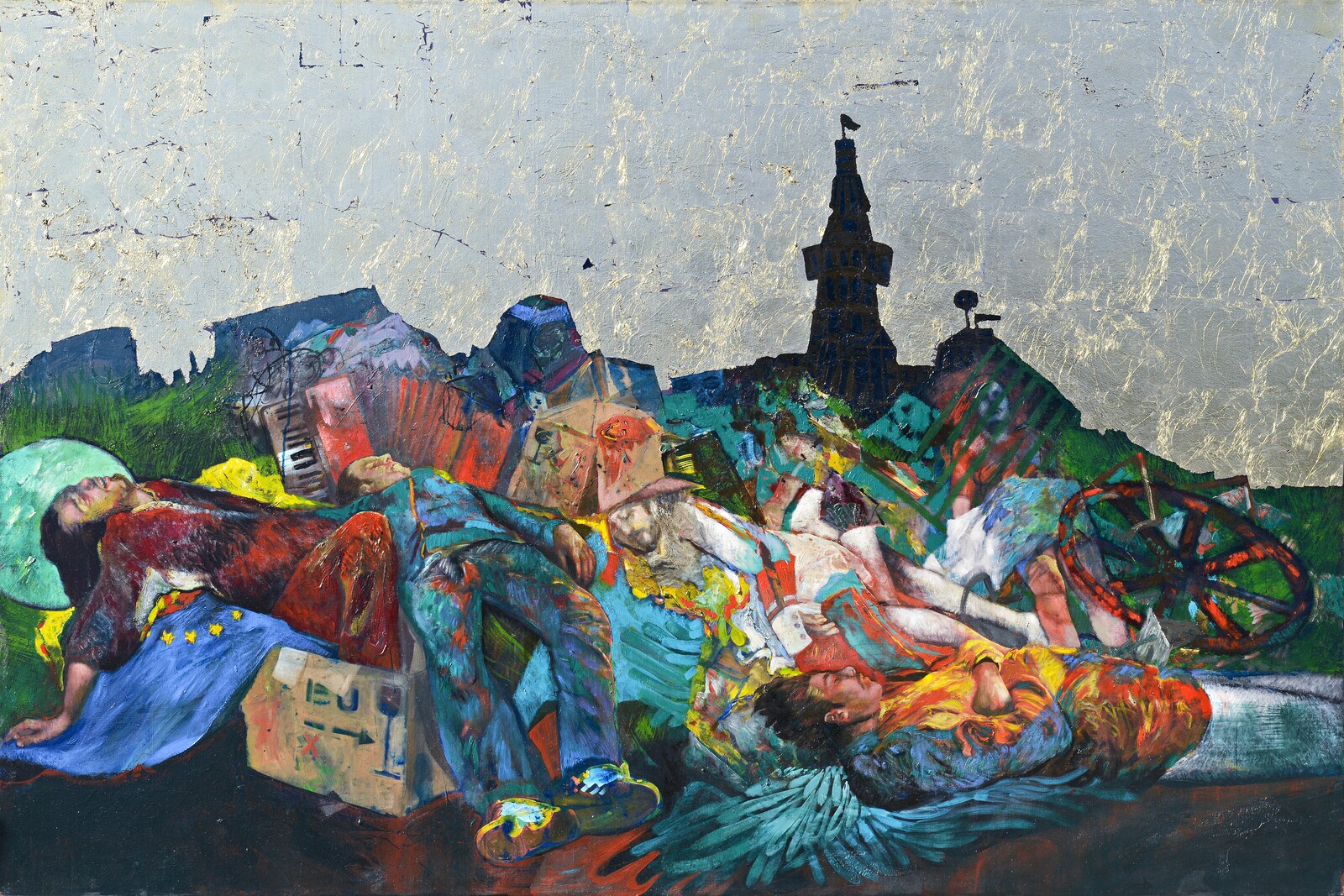V4 joins RomaMoMA
May 16–November 30, 2023
Artists: Małgorzata Mirga-Tas, Ľuboš Kotlár, Mara Oláh Omara, Vera Lacková, Zoran Tairović
Curated by Bratislav Mitrović
The same degree and intensity of generalization, reductionism, and stereotyping apply to imagining the Balkans and the Roma. Maria Todorova’s concept of Balkanism provides a sound theoretical framework to explore the deployment of Balkanist stereotypes against Roma in Eastern Europe and Western Balkans. As explained in her foundational text, Imagining the Balkans (1997): “By the beginning of the twentieth century, Europe had added to its repertoire of Schimpfwörter, or disparagements, a new one that, although recently coined, turned out to be more persistent over time than others with centuries-old tradition.”Both the Roma and the Balkans have been described as the “other” of Europe. It is in the field of the visual where epistemic and physical violence is the most obvious. Kotlár, Lacková, Mirga-Tas, Omara, and Tairović engage in intimate dialogue with the history of—frequently hurtful—representations of Roma. The participating artists do not care to conform to the standards of behaviour devised as normative by and for the “civilized world,” they choose artistic strategies which directly and consciously subvert the objectification, feminization, and sexualization of the Balkan and Roma identities. So, no wild nature, no savage locals, no guns, or other clichés. Instead of the gorges of the Balkans, we focus on here and now. Zoran Tairović’s Vašarište, Omara’s Mogyoród, the idyllic landscape by Mirga-Tas, and Vera Lacková’s depiction of Roma partisans during the Second World War present an updated picture of Roma, seen by Roma masters. Ľuboš Kotlár’s series case study: Jerusalem provides an ironic commentary on the Instagrammability of Otherness.
Belgrade, the gateway to the Other, is also a silent participant of this exhibition, pinpointing Serbia’s liminal position between “Europe” and the “Balkans” as a potentially ideal standpoint from which one might challenge the binary oppositions of Gypsyism and Balkanism and begin to reimagine the Roma and the Balkans, redirecting these categories as a site of political engagement and critique.
The project is co-financed by the Governments of Czechia, Hungary, Poland and Slovakia through Visegrad Grants from International Visegrad Fund. The mission of the fund is to advance ideas for sustainable regional cooperation in Central Europe.
Further exhibitions of the European Roma Institute for Arts and Culture (ERIAC)
Barvalo: Roma, Sinti, Manoushes, Gitanos, Travellers…
Mucem, May 10–September 4, 2023
Developed in partnership with the Museum of Civilizations of Europe and Mediterranean in Marseille, France and co-curated by ERIAC.
“Barvalo”, meaning “rich” and by extension “proud” in Romani, is dedicated to the history and diversity of the Romani peoples of Europe. Denouncing anti-Gypsyism and stereotypical representations, the exhibition also proposes to reverse the visitor’s gaze and reflect on belonging and identity. The exhibition is designed collaboratively by a team of nineteen people of Romani (Roma, Sinti, Manouches, Gitanos, Travellers) and non-Romani origin.
Among 200 works, 62 come from the Mucem’s collections and 15 were specially conceived for the exhibition and produced by the museum: 6 commissions to European Romani artists—Luna De Rosa (Italy), Gabi Jimenez and Marina Rosselle (France), Mitch Miller (Scotland), Emanuel Barica (Romania)—and 9 audiovisual creative works (film, animated map and sound).
Emerging Talents: Spring Salon
Participating artists: Sharon Svec, Ornella Rudevich, Denis Nanciu, Erik Tollas, Roland Korponovics, Sergei Snigur
ERIAC Berlin.
May 16–July 28, 2023
Follow the RomaMoMA Blog here.




